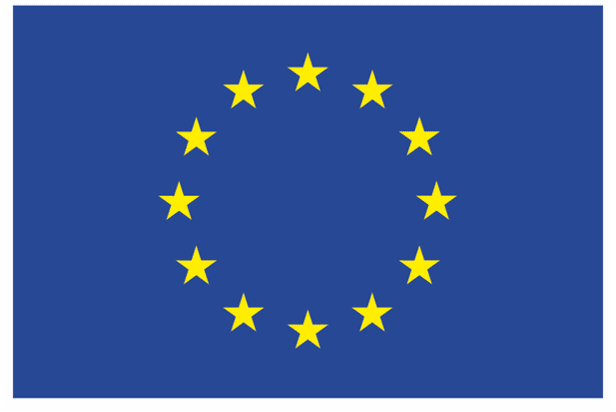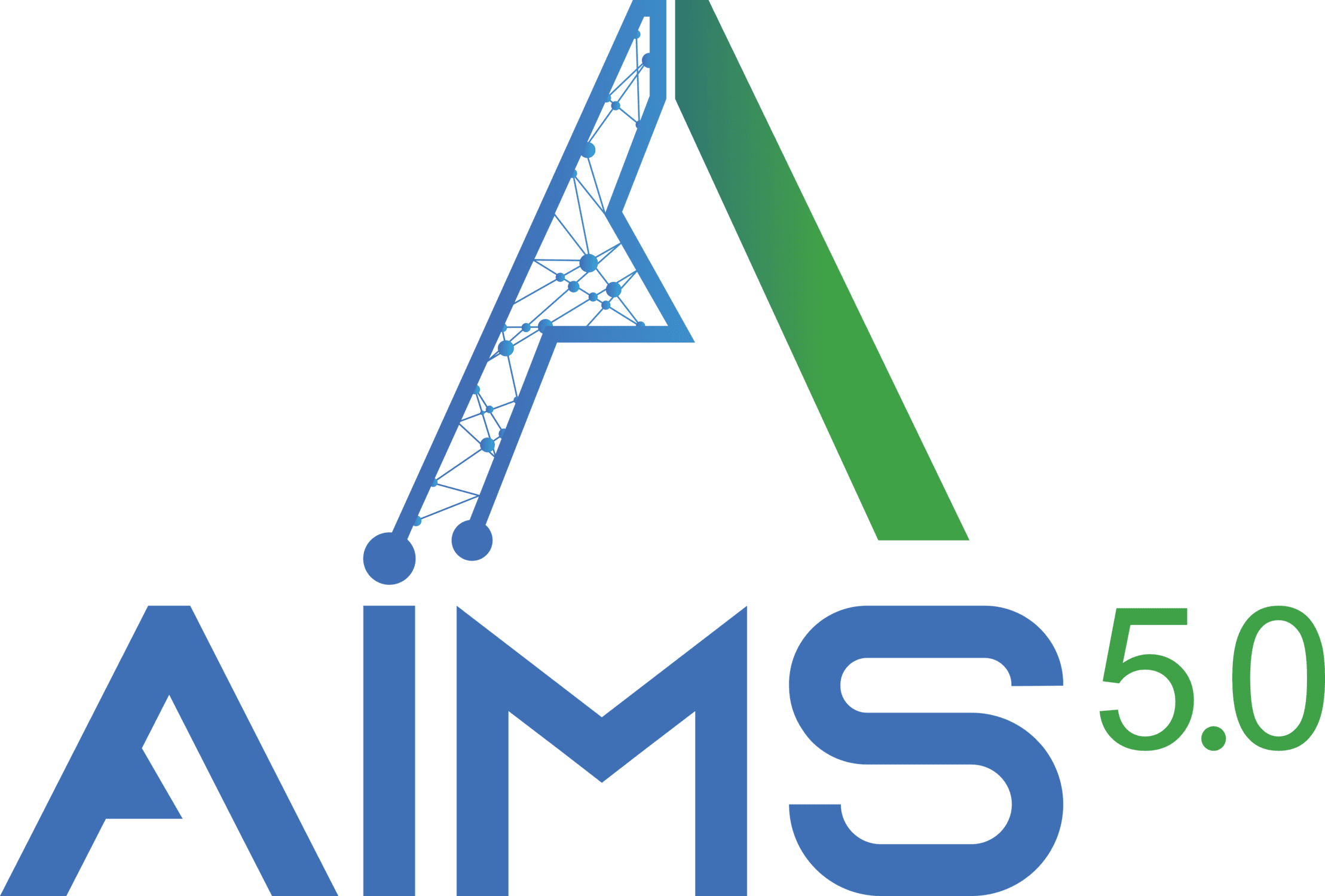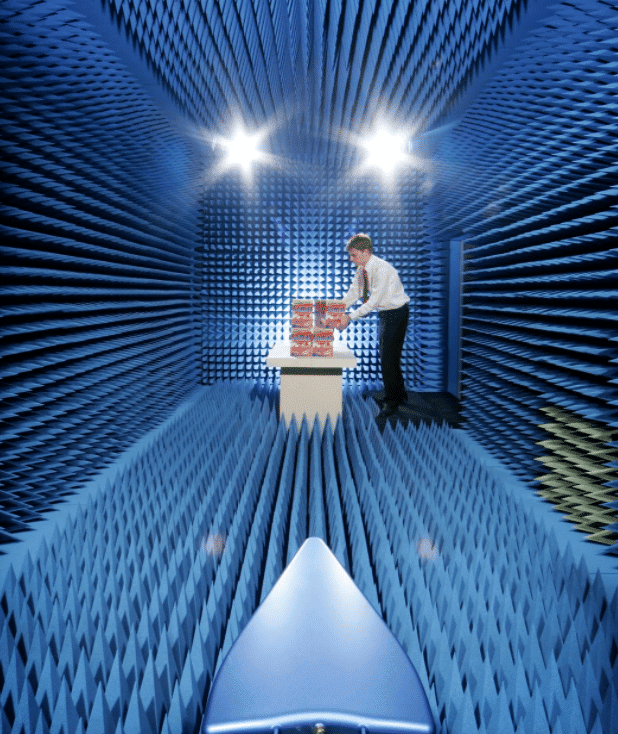our projects
Recent International Research Projects
CISC Semiconductor has a track record of impactful engagement in collaborative international research ventures, primarily alongside prominent enterprises operating within the semiconductor, automotive, and wireless communication sectors. The insights garnered from these endeavors seamlessly integrate into our product portfolio, playing a pivotal role in our product excellence. Our partners’ needs, coupled with the outcomes of our cutting-edge R&D initiatives, constitute the fundamental elements underpinning the creation of CISC Semiconductor’s offerings, such as the CISC RFID Application and System Design Kit, the System Architect Designer (SyAD®), and more. The following represent some of our recent research projects.
Across a diverse spectrum of international projects and framework programs, CISC Semiconductor assumes a pivotal role within our specialized business domain. This pivotal involvement empowers us to continuously deliver cutting-edge technology, given our active participation in global research endeavors focused on embedded microelectronic system design using the latest innovations.
The following list provides a glimpse into some of our recent research projects. If you’re interested in collaborating on a research project, we invite you to connect with us. Your insights and expertise can further enrich our collective pursuit of innovation.
AgrarSense
AGRARSENSE is a large 3-year Chips Joint Undertaking consortium project aiming to develop microelectronics, photonics, electronic packaging for agricultural use and forestry. The project will also develop related ICT and data management to realise large scale field demonstrators for real industrial needs.
Food security has become an increasing concern due to a mixed bag of factors that include climate change, fragile supply chains and agricultural activity. In fact, the increase in agricultural production to nourish a growing global population has highlighted the need for innovative solutions. With this in mind, the EU-funded AGRARSENSE project will combine the efforts of large enterprises, SMEs and research and technology organisations. To do this, they will develop several technologies like automated agricultural tools and improved sensor technology that will help improve efficiency and protect value chains.
Through this Joint Undertaking, the AGRARSENSE consortium of 51 partners (including 4 affiliates) plan to take agricultural technology and productivity to the next level, beyond the State-of-the-Art, by combining some of the most advanced organisational capabilities from across European industrial 11 Large Enterprises, 25 SMEs and 15 Research & Technology Organisations (RTOs), from 14 countries.
Key Highlights:
Funded by: The project is supported by the Chips Joint Undertaking and its members, including the top-up funding by Sweden, Czechia, Finland, Ireland, Italy, Latvia, Netherlands, Norway, Poland, Spain.
Duration: Three years
Consortium: 51 partners from 14 countries
AIMS5.0
AIMS 5.0 (Artificial Intelligence in Manufacturing leading to Sustainability and Industry 5.0) is an ambitious EU research project launched in May 2023. This groundbreaking initiative, supported by the H2020 research and innovation program, ECSEL joint undertaking, and national funding authorities across 12 European countries, aims to revolutionize manufacturing processes for a more sustainable future.
With a consortium of 53 partners spanning various industries, AIMS 5.0 fosters collaboration to develop cutting-edge hardware, software components, and a secure AI networking platform. These innovations will not only strengthen manufacturing in key sectors but also promote resilient supply chains across Europe.
The project is set to enhance manufacturing processes, boost energy efficiency, and drive progress in secure sensor and asset onboarding, predictive quality assurance, human-machine interaction, and cross-domain services. With a substantial research budget of 70 million euros and a three-year timeline until April 2026, AIMS 5.0 is poised to make a significant impact on the future of sustainable manufacturing.
AIMS 5.0 is a testament to Europe’s commitment to sustainable manufacturing practices and technological innovation in the Industry 5.0 era.
Key Highlights:
Funded by: H2020 research and innovation program, ECSEL joint undertaking, and national funding authorities from 12 European countries
Duration: Three years until April 2026
Research Budget: 70 million euros
Consortium: 53 partners representing various industries and research institutions across Europe
Energy ECS
Energy ECS (Electronics, Components, Systems) project is a large 3-year consortium project on smart and secure energy solutions for future mobility. The project aims to develop a set of technologies to improve the digitalization of e-mobility systems and related energy solutions.
Energy ECS project is an extensive 3-year project that develops smart and secure energy solutions for future mobility and green energy transition. The project has a total of 29 partners from eight European countries and an overall budget of 33 M€. It is co-financed via the ECSEL Joint Undertaking of the EU Horizon 2020, national funding agencies of the participating countries, and the consortium partners. The project is coordinated by TietoEVRY and consists of 15 small and mid-sized enterprises, eight large enterprises, and six research and technology organisations from Finland, Austria, Germany, Ireland, Iceland, Italy, Sweden, and Switzerland. The project consortium and proposal were built with the help of Spinverse.
Website: www.energyecs.eu


OPEVA
The main objective of the OPEVA project is to explore the benefits that can be obtained from the interaction between the multiple actors involved in the modern “mobility experience” in order to optimize the autonomy of electric vehicles in a modern world that also requires sustainability and resource optimization. This translates into developing an energy-efficient power train and dynamic routing, improving accurate range prediction techniques, improving EV grid integration, developing efficient charging technologies, and guaranteeing a wider EV adoption. To accelerate the deployment of sustainable electric vehicles (EV) and improve EV market penetration, the project aims to develop technological solutions involving the overall ecosystem, thereby addressing limiting psychological factors such as range anxiety, high price, limited charging facilities, and duration of charging. The OPEVA will contribute to the key application area on Mobility and a number of major long-term challenges including embedded software, edge computing, and embedded artificial intelligence.
The project identifies six technology domains (i.e., In-vehicle data driven methods, out-vehicle data driven methods, communication with infrastructure, charging infrastructures, smart BMS, driver-oriented human factors monitoring analysis), involving 23 key technologies, and four non-technical domains (i.e., economic factors, legal and ethical aspects, human factors, societal and environmental factors), which must be developed to move from conventional EVs to sustainable EVs. The project achievements will be tested in 9 collaborative demonstrators, which include: HiL testing for integrated battery balancing and power electronics, development of Battery Packs with Smart BMS, simulation on HiL system Test and Perform Physical Test with Battery Pack Test Machine, improved sensors for accurate battery monitoring, energy Efficient Route Planning, in-vehicle integration of inductive charging with BMS and power electronics, modular batteries storage based second life EV module variants, GaN-based IoT-enabled surface inductive charging system, and Flexible Charging schedulers.
Website: https://opeva.eu/
Start/Duration: Jan, 1st 2023 / 36 month
Funded by: OPEVA project involves 37 partners from 11 European Countries for a total budget of 25.5M €, and it will leverage the expertise of a strong consortium covering the whole value chain of electric mobility (Tier-1, Tier-2, OEMs and technology providers). The project is co-sponsored by Key Digital Technology Joint Undertaking, the program Horizon Europe and the National authorities of the participating countries, and has received funding from the Swiss State Secretariat for Education, Research and Innovation (SERI) and the Innosuisse – Swiss Innovation Agency.
REFORM
The REFORM project is driven by a bold vision – to overcome the current barriers in the realm of functional green electronics by forging cutting-edge materials and processes. Our mission is to propel green electronics beyond early-stage research, facilitating their swift transition to near-market readiness through the creation of industry-validated prototypes that can be rapidly scaled. This shared ambition unites a consortium of accomplished researchers, industry thought leaders, and renowned professionals, ensuring a synergetic approach to our objectives.
Objectives:
- Raise awareness and facilitate access to fundamental building blocks essential for the rapid adoption of sustainable flexible, printed electronics.
- Develop an array of sustainable fully-organic conductive inks tailored for application in printed flexible electronics.
- Innovate sustainable, flexible substrates optimized for printed green functional electronics.
- Engineer bio-based debondable adhesives designed to facilitate on-demand separation of electronic components for efficient recycling.
- Integrate newly developed components into novel green sensors and technological concepts to drive circularity.
- Validate plastic and metal recovery processes that promote circularity.
- Establish a comprehensive testing and verification workflow while contributing to the development of industry standards.
- Create prototypes of applied industrial sensors that enable mass-scalable implementation of green electronics.
Expected Impact: REFORM assembles a consortium of leading entities with unparalleled expertise, distinctive intellectual property, and capabilities in printed, flexible, and sustainable/organic electronics. This collaborative prowess uniquely positions the REFORM consortium to drive sustainable innovation forward. The project will stand as a testament to European leadership in the domain of flexible, printed, and organic electronics, cultivating new concepts, designs, and technologies that underpin circular economy principles and sustainability. Furthermore, the project is poised to foster the development of next-generation components and systems, ushering in climate-neutral digital solutions across diverse sectors.
Website: https://www.reform-project.eu/
Funded by: The REFORM project proudly receives funding from the European Union’s Horizon Europe programme – an ambitious research and innovation framework for 2021-2027, endowed with a budget of €95.5 billion.
SURE5.0
SURE 5.0 is a project funded by the European Commission under the Horizon Europe programme, which aims to support SMEs from the Civil Transportation (MTA and aerospace & defence) and Electronics ecosystems, to integrate in their manufacturing processes the industry 5.0 principles, in order to become more human-centric, sustainable and resilient. For this aim, the project will foster the adoption and deployment of advanced technologies as well as the consideration of social innovation practices that will facilitate their twin transition (digital and green). The project will mobilise EUR 2,6 million in cascade funds addressed to SMEs so they can finance their 5.0 projects.
Project Website: https://sureproject.eu/
Duration :36 months
EU Funding: 4,988,125.00
Consortium: 11 partners from 8 different countries (France, Spain, Austria, Germany, Ireland, Italy, Estonia and Greece). This collaborative group has been carefully selected with the right mix of cluster organizations, RTOs, universities and business innovation centres as members, being able to offer cross-border high level expertise in various domains of competence and the best value to SMEs.
This project is funded by the European Commission under the Horizon Europe programme.
TRANSACT
TRANSACT aims to revolutionize safety-critical cyber-physical systems by developing a universal distributed solution architecture. Addressing four key challenges:
- Architecture Transformation: Shifting from monolithic CPS architectures to distributed solutions.
- Performance Assurance: Ensuring optimal performance across the device-edge-cloud continuum.
- Security and Privacy: Guaranteeing robust cybersecurity and privacy throughout.
- Business Model Development: Creating viable business models for CPS within the distributed continuum.
Leveraging edge and cloud computing technologies, we aim to create seamless, cost-effective solutions. By streamlining CPS devices, reducing software footprint, and integrating AI services, we accelerate the introduction of innovative value-based services while maintaining rigorous safety, security, and performance standards. Ultimately, our vision is a future where safety-critical systems seamlessly operate within a distributed continuum, meeting diverse market demands efficiently and reliably.
Key Highlights:
Funded by: The project is supported by the Chips Joint Undertaking and its members, including the top-up funding by Sweden, Czechia, Finland, Ireland, Italy, Latvia, Netherlands, Norway, Poland, Spain.
Consortium: 29 Partners including SMEs, large industries, research institutes and universities from 9 countries
Research Projects
Established in 1999, CISC Semiconductor has consistently outpaced market growth, both in terms of size and economic impact. To excel in emerging technologies, CISC prioritizes robust research and development collaborations with enterprises aligned with its business domain. This strategic approach has driven CISC’s involvement in international research projects from its inception to the present day. Since 2001, CISC Semiconductor has dedicated 100 Person Years in over 80+ projects with direct engagement in collaborative research and development initiatives spanning across Europe, encompassing major European corporations.
Across a diverse spectrum of international projects and framework programs, CISC Semiconductor assumes a pivotal role within our specialized business domain. This pivotal involvement empowers us to continuously deliver cutting-edge technology, given our active participation in global research endeavors focused on embedded microelectronic system design using the latest innovations.
The following list provides a glimpse into some of our recent research projects. If you’re interested in collaborating on a research project, we invite you to connect with us. Your insights and expertise can further enrich our collective pursuit of innovation.
ADACORSA
ADACORSA provides European technology to render drones as a safe and efficient component of the mobility mix, with differentiated, safe, and reliable capabilities extended beyond visual line of sight (BVLOS) operations. To reach the vision, the available technologies will be explored. This includes the option of transferring and extends automotive sense and control technologies, as well as commercial-off-the-shelf communication technologies, applying innovative security features to reach adequate safety levels for modern unmanned aviation.
ADACORSA is a project to develop sensor and communication technologies for drones, with the strategic aim of:
- Helping unlock potential in long-range drone operations
- Beyond visual line of sight
- Contributing to higher public and regulatory acceptance of drone use
- More robust and reliable technologies
- Better sensors via fusion and more reliable communications via integration of data links
- Further, strengthen the integration of the automotive and drone industry
- World-class sensors from the automotive industry
- Commercial off-the-shelf data communication technologies and services
- Design for automotive-style efficient production of components and subsystems
- Align with new and upcoming European and world-wide regulations for drones
- Focus on the Specific Category via approvals under the SORA procedure
- Technical focus on components and systems for mitigation of air risk in higher air risk classes
CISC as a hardware enabler and horizontal service provider, with regards to security and privacy, will provide secure and reliable communication from IoT devices to cloud environments via gateway devices (end-to-end security). We will define and propose a gateway reference architecture capable of efficiently supporting the development of applications in smart domains and across domains (mobility, energy, buildings, smart cities, etc.) in-service ecosystems that are open, scalable, and expandable. The gateway is at the core of these IoT/CPS applications that allow the user to interact with other edge devices. Therefore, CISC will primarily take part in secure communication and identification of the drone and/or the user (maintenance).
Website: https://adacorsa.eu
Start/Duration: May, 1st 2020 / 36 month
This project has received funding from the ECSEL Joint Undertaking under grant agreement No 876019. The JU receives support from the European Union’s Horizon 2020 research and innovation program. It is co-funded by the consortium members, grants from Austria, Germany, Netherlands, France, Greece, Portugal, Turkey, Italy, and Finland.
ANASTASIA+
“Analog Enhancements for a System to Silicon Automated Design” was started in 2001.
CISC was contributing to this project since mid of 2002 in the area of system simulation. Until the end of 2004 CISC’s contribution had been more than 4 man-years. CISC’s work was related to the simulation of heterogeneous embedded microelectronic systems. A method to combine system-level simulations with descriptions suitable for the simulation on block-level had been developed. The work focused on the problem of handling analog behavior and components within basically digital system descriptions. The developed approach uses VHDL or SystemC as a modeling language for analog and mixed-signal block level models together with system simulation tools.
Please find out more about the project on its web page.
NFC (Near Field Communication) is a contactless communication technology allowing the secure and convenient exchange of data over short distances. NFC has recently seen a steep market ramp-up, based on adoption in several high volume segments like mobile handsets. While standards are already in place to ensure compliance of products, there is still a big step necessary to achieve full interoperability of various devices from different manufacturers in real-life systems. The big diversity of NFC applications, as well as legacy aspects, add to the interoperability challenge. On the other hand system, reliability is a pre-condition to gain trust and acceptance of end-users, to open new market opportunities, which are currently blocked due to interoperability concerns.
The ultimate goal of ANITAS is to accelerate NFC market success. This will be achieved by a significant step-up in NFC interoperability and fast access to related findings for the involved partners.
The most important expected direct results of ANITAS will be:
- A detailed understanding of the NFC parameter set and its impact on interoperability
- The development of a novel HW/SW architecture for the NFC measurement system
- Validation of novel concepts regarding usability in next-generation NFC interoperability test systems for NFC products (considering customer and end-user requirements).
Related links:
ARROWHEAD TOOLS
The Arrowhead Tools project aims for digitalization and automation solutions for the European industry, which will close the gaps that hinder the IT/OT integration by introducing new technologies in an open-source platform for the design and run-time engineering of IoT and System of Systems. The project will provide engineering processes, integration platform, tools, and tool chains for the cost-efficient development of digitalization, connectivity, and automation system solutions in various fields of application. Arrowhead Tools is Europe’s largest project for solutions in automation and digitization for the industry. Arrowhead Tools has a budget of EUR 91 million and 81 participants, including 28 universities and research institutes and 53 companies from, among others, the automotive, mining, electronics, and software industries. The purpose of the three-year project Arrowhead Tools is to create engineering tools for the next generation of solutions in digitization and automation for the European industry. These tools will bridge the gap that currently prevents a total integration of IT and operational technology, i.e. how the industry works towards the Internet of Things (IoT) and “system of systems”; to build large systems using the Internet of Things Framework.
Webpage: https://arrowhead.eu/
Start/Duration: May, 1st 2019 / 36 month
This project has received funding from ECSEL Joint Undertaking (JU) under grant agreement No 826452 and by the Carinthian Business Promotion Fund (KWF). This Joint Undertaking receives support from the European Union’s Horizon 2020 research and innovation program and by the 30 ECSEL Participating States.
AVTR
AVTR stands for “Optimal Electrical Powertrain via Adaptable Voltage and TransmissionRatio” – a project under the umbrella of the 7th Framework Program.
AVTR addresses the development of the complete Electrical powertrain optimized as a whole of systems:
- Energy saving in the pure urban drive up to 20% with respect to state-of-the-art fixed transmission ratio
- Address the application to the largest market context (vehicles ranging in weight less than 1000kg),
- High fun to drive because of the adaptable transmission ratio allowing best acceleration in all conditions
- CISC Semiconductors’ contribution is in the area of simulation of the complete electrical power train for electrical vehicles with a weight below 1000kg.

E3CAR
e3car stands for “Energy Efficient Electrical Car” – a project under the umbrella of the ENIAC Joint Undertaking (JU).
The objective of the e3car project was the development of nanoelectronics technologies, devices, circuits architectures, and modules for hybrid and electrical cars/vehicles and the demonstration of these modules in a final system.
The project considered both vertical integration with the final user and equipment providers and horizontal cooperation to build a solid nanoelectronics technology base for European electrical car industry and establish standard designs and platforms for electrical/hybrid cars. The project considered architectures, technologies, and modules being applied to electric vehicles on systems and sub-system levels.
New design and concepts have been developed for power train, power conversion, power management, and battery management. These systems are no-fail safe and fault-tolerant. New methods and technologies for improved reliability and increased lifetime have been derived during the validation phase.
In this context, the power and high voltage electronics and smart miniaturized systems for power management, engine control, and energy recovery systems have been specified and developed, based on the voltage/current range of the needed module.
CISC Semiconductors’ contribution was in the area of modeling and simulation technologies.
Webpage: www.e3car.eu
HIGHWISE
The project HighWise – Highly-Efficient Wireless Energy Management System for utility range Power Plants – aims to develop a novel plant controller concept, which will integrate generation, storage, and measurement systems, by flexible, seamless, and secure communication schemes including wireless communications for new sensor technologies also. The concept is based on a distributed decentralized approach offering more flexibility and redundancy to increase overall robustness and increases failsafe operations by applying functional safety standard(ISO26262) concepts, also high efficiency, low maintenance, and MTBF increment.




IDEV40
iDev40 focuses on “digitally connecting” value chains to facilitate and strengthen the innovation capacity of large and small European Electronic Components and System actors for sustainably competitive Electronic Components and Systems “Made in Europe”. The iDev40 (Integrated Development 4.0) European research project on networking for development and production processes for electronic components and systems has been started on 1st May 2018. The project will include 38 partners from 6 countries under the leadership of Infineon Austria. The 47 million euro project will focus on the smart networking of development and production processes for electronic components and systems. It is planned to last for 3 years and focus on 3 areas:
- Secure data and knowledge management along the product life cycle
- Digital information flow
- Innovations in the supply chain
Through the project, over 15,000 jobs will be secured in the companies involved over the medium to long term. iDev40 is organized as a private-public partnership and combines investments from industry, individual countries, and ECSEL (Electronic Components and Systems for European Leadership) Joint Undertaking. In addition to investments from industry, iDev40 is co-financed by funding from Austria (BMVIT), Belgium, Germany, Italy, Romania, Spain, and the ECSEL Joint Undertaking.
Webpage: http://idev40.eu
Start/Duration: May, 1st 2019 / 36 month
This project has received funding from the ECSEL Joint Undertaking under grant agreement No 783163. The JU receives support from the European Union’s Horizon 2020 research and innovation program. It is co-funded by the consortium members, grants from Austria, Germany, Belgium, Italy, Spain, and Romania. Watch the video.
InSecTT
InSecTT will foster cooperation between big industrial players from various domains, a number of highly innovative SMEs distributed all over Europe, and cutting-edge research organizations and universities. The project features a big variety of industry-driven use cases embedded into various application domains where Europe is in a leading position, i.e. smart infrastructure, building, manufacturing, automotive, aeronautics, railway, urban public transport, maritime as well as health.
The demonstration of InSecTT solutions in well-known real-world environments like airports, trains, ports, and the health sector will generate a huge impact on both high and broad levels, going from citizens up to European stakeholders. InSecTT will bring intelligent solutions into the market by conclusive showcases all over Europe, hence strengthening Europe’s industry and once more make European solutions a frontrunner in cutting-edge technology.
InSecTT will open up new market opportunities for the European industry, will significantly reduce time to market and decrease costs for trustable AIoT solutions on the market, in particular by using new designs and technical building blocks. InSecTT will significantly impact the European Union to achieve the full potential of the “Artificial Intelligence of Things”.
It will establish the EU as a center of intelligent, secure, and trustworthy systems for industrial applications enabled by a strong industry with a strong reputation and an informed society, in order to enable products and services based on AI compliant to European values and “Made in Europe”.
Hardware enabler and horizontal service provider, with regards to security and privacy, CISC is supporting secure and reliable communication from IoT devices to cloud environments via gateway devices (end-to-end security). We will define and propose a gateway reference architecture capable of efficiently supporting the development of applications in smart domains and across domains (mobility, energy, buildings, smart cities, etc.) in-service ecosystems that are open, scalable, and expandable. The gateway is at the core of these IoT/CPS applications that allow the user to interact with other edge devices.
Website: https://www.insectt.eu
Start/Duration: May, 1st 2020 / 36 month
InSecTT has received funding from the ECSEL Joint Undertaking (JU) under grant agreement No 876038. The JU receives support from the European Union’s Horizon 2020 research and innovation program and Austria, Sweden, Spain, Italy, France, Portugal, Ireland, Finland, Slovenia, Poland, Netherlands, Turkey. Watch the video
IOE
IoE stands for “Internet of Energy for Electric Mobility” – a project under the umbrella of the ARTEMIS Joint Undertaking (JU). The objective of the Internet of Energy (IoE) is to develop hardware, software, and middleware for seamless, secure connectivity and interoperability achieved by connecting the Internet with the energy grids. The application of the IoE will be the infrastructure for electric mobility. The underlying architecture is of distributed Embedded Systems (ESs), combining power electronics, integrated circuits, sensors, processing units, storage technologies, algorithms, and software.
The IoE will implement the real-time interface between the power network/grid and the Internet. The grid will increasingly rely on smaller, locally distributed electricity generators and storage systems that are based on plug & play principles. Power network devices and loads at the edge (such as electrical vehicles, buildings, electric devices, and home appliances) can be charged or connected to any source of energy is solar, wind, or hydroelectric.
CISC Semiconductors’ contribution is in the area of identification for smart access to the electrical grid.
Webpage: www.artemis-ioe.eu

The purpose of this project was to advance IoT/RFID technology to connect and manage a multitude of “things” (sensors, items, objects, assets, etc.) CISC is a leading vendor of UHF RFID measurement and test technologies. Passive UHF RFID (RAIN RFID – www.rainrfid.org) deployment started nearly 20 years ago. For many years the communication range of passive UHF RFID has been limited by the power consumption of the passive RFID tag.
Starting with a 3 m read range the technology received significant attention, which resulted in a strong development with major steps. During this time CISC focused on tag conformance and performance testing. In 2016 there was a major change. Passive UHF RFID tags (e.g. Impinj Monza 6 or NXP UCODE 7) have a power consumption of less than -20 dBm resulting in a read range of >20m, which allows the development of completely new applications.
Therefore, since 2016 the backlink from the tag to the reader started to become the limiting element. For that reason, CISC started with the development of reader performance testing solutions. This provides solutions that are suitable for testing the performance of handheld readers, which typically have less receiver performance than fixed readers. Within this project, CISC developed new measurement techniques for performance testing and tuning of UHF RFID readers for advanced testing of the next generations of UHF RFID readers and UHF RFID reader systems.
Start/Duration: July 2018 / 18 months
Related links:
CISC RAIN Xplorer – Reader testing
The project is funded by the Austrian Research and Funding Promotion Agency (FFG) under the Eureka Austrian-Canadian program.
LIMA
The project LiMA (Learning Platform in Microelectronic Applications) was one of the projects of the Fifth (EC) Framework Programme – Creating a user-friendly information society (IST).
From September 2001 till August 2003, CISC was involved in testing the framework and contributed an web-based application service interface to access standard EDA tools for circuit design (like e.g. Modelsim from Mentor Graphics).
Webpage: www.lima-project.de
In order to strengthen our communities and regions, new business models are needed that better connect the various stakeholders and exploit synergies. In addition to the traditional stakeholders – retail, commerce, services, and the public sector – this now increasingly includes the sharing economy.
Many project implementations are often market inhibiting due to multi-stakeholder structures and diversity of services and local providers. Potential projects develop only very slowly or fail due to decisions that are not supported jointly. The only way to create value for users is through a common approach.
The project will explore how COYERO can support the complex stakeholder project structure to facilitate joint digitized marketing and networking projects and unlock the potential of regional economies for all stakeholders. The aim is to create a completely new access and marketing platform for local products, services, and infrastructure (mobility), therefore a “market with” instead of a “market to”. In addition, it will be evaluated how non-tradition- ally tradable offers such as initiatives of the sharing economy can be integrated and how contributions to the 17 global sustainable development goals (SDGs) can be realized.
The project is funded by the Austrian Research and Funding Promotion Agency (FFG) under the 1. Call for the Fast Track to Digital program, with the number FO999887654.
Website: https://projekte.ffg.at/projekt/4145227
Start/Duration: 1.10.2021 / 24 months
POLLUX
POLLUX stands for Process Oriented Electronic Control Units for Electric Vehicles Developed on a multi-system real-time embedded platform – a project under the umbrella of the ARTEMIS Joint Undertaking(JU).
The objective of POLLUX is to develop a distributed real-time embedded systems platform for next-generation electric vehicles, by using a component and programming-based design methodology. Reference designs and embedded systems architectures for high-efficiency innovative mechatronics systems will be addressed with regard to requirements on composability, networking, security, robustness, diagnosis, maintenance, integrated resource management, evolvability, and self-organization.
Next-generation Electrical Vehicles will begin the convergence between computer and automotive architectures: future automobiles will be mechatronic systems comprising a multitude of plug-and-play and self-configurable peripherals. Peripherals will be embedded systems containing hardware, algorithms, software. The architecture will be based on distributed energy while the propulsion systems will adopt radical new control concepts. Sensing, actuation, signal processing, and computing devices will be embedded in the electronic equipment, electrical motors, batteries, and mechanical parts as well.
CISC Semiconductors’ contribution is in the area of modeling and simulation technologies.
Webpage: www.artemis-pollux.eu

PRYSTINE
Fully automated driving is one major enabler to master the Grand Societal Challenges of safe, clean and efficient mobility, and autonomous driving will affect society and most disruptively change the automotive industry as we know it today. Consequently it will also greatly impact the semiconductor industry and open new market opportunities, since semiconductors play an indispensable role as enablers for automated vehicles. PRYSTINE will realize Fail-operational Urban Surround perceptION (FUSION) which is based on robust Radar and LiDAR sensor fusion and control functions in order to enable safe automated driving in urban and rural environments. Furthermore, PRYSTINE will strengthen and extend traditional core competencies of the European industry, research organizations, and universities in smart mobility and in particular in the electronic component and systems and cyber-physical systems domain. PRYSTINE’s well-balanced, value chain oriented consortium, is composed of 60 project partners from 14 different European and non-European countries, including leading car manufacturers, Tier-1 suppliers, engineering and semiconductor suppliers as well as supply chain partners, technology integrators, universities and research institutes. The project will also have significant impact on smart regions. High tech jobs in the area of innovation toward automated driving which are expressed core competences of the participating countries such as Austria, Germany, Italy, Spain and the Netherlands.
Website: https://prystine.eu
Start/Duration: May, 1st 2018 / 36 month
This project has received funding from ECSEL Joint Undertaking (JU) under grant agreement No 783190. This Joint Undertaking receives support from the European Union’s Horizon 2020 research and innovation program and by the 30 ECSEL Participating States.
REFLEX
The project investigates a localization system of passive RFID tags for an intelligent process control system. The real-time tracking of components, tools, and products is a key technology to optimize workflows, e.g. in flexible manufacturing. REFlex not only covers research of the localization system and modeling of flexible production environments: Ethical and social implications of the new technology (possible tracking of persons) are studied as well.CISC works on project-specific adaptation of existing RFID test hardware for flexible production systems and acts as an interface to relevant standardization bodies. Webpage: not available.
Start/Duration: Oct, 1st 2014 / 39 month
The project is funded by the Austrian Research and Funding Promotion Agency (FFG) under the ICT of the future program (Call IKT der Zukunft 2) under contract 485630.


ROBIN
The project ROBIN (Robust Design for Efficient Use of Nanometer Technologies) addressed signal corruption in Systems-in-Package either at the macro-level (power distribution, substrate) or micro-level (interconnect crosstalks, natural radiations). By considering manufacturing constraints, optimal trade-offs will be defined between circuit robustness and efficient use of technology, down to 45 nm.
SCOTT
SCOTT is “Secure Connected Trustable Things” – a project under the umbrella of the ECSEL Joint Undertaking (JU). SCOTT aims to extend the IoT for wirelessly connected smart sensors and actuators to be used in mobility, building & home / smart infrastructure, and health domains. It will not just deal with ‘things that are connected’, but with ‘trustable things that securely communicate’. SCOTT will therefore enable efficient, trustworthy connectivity and facilitate ubiquity of intelligent embedded systems and systems of systems. Inter alia, SCOTT will establish a ‘Trusted System Development Framework’, will provide measurable security, and will create an unprecedented ‘privacy labeling’ to create sustainable trust in the IoT. CISC’s contribution is in the area of the definition of use cases and implementation of reference building blocks with a focus on safety and security. CISC is leading all SCOTT’s “Standardization, Regulation, Certification” activities.
Webpage: www.scottproject.eu
Start/Duration: May, 1st 2017 / 38 month
SCOTT is funded by the Austrian Federal Ministry of Transport, Innovation and Technology (BMVIT) under the program “ICT of the Future” between 06/2017 and 06/2020 (more information https://iktderzukunft.at/en/) and by the Electronic Component Systems for European Leadership Joint Undertaking under grant agreement No 737422. This Joint Undertaking receives support from the European Union’s Horizon 2020 research and innovation program and the public authorities from Austria (FFG), Spain, Finland, Ireland, Sweden, Germany, Poland, Portugal, Netherlands, Belgium, Norway.
SECREDAS
SECREDAS stands for “Product Security for Cross-Domain Reliable Dependable Automated Systems” – a project under the umbrella of the ECSEL Joint Undertaking (JU). SECREDAS aims to build a reference architecture for Secure and Safe Automated systems compliant with the new GDPR Regulation. The focus will be on automotive, rail, and personal healthcare, all of which demand high security and safety, covering technologies such as radar, lidar, Vehicle-to-Infrastructure, and in-vehicle networks. CISC’s contribution is focussed on the integration of enhanced chipsets providing multiple secure elements, thus allowing enhanced services and security on gateways for vehicles. This will enable now also 3rd party applications executing in a secure environment on the vehicle gateway to apply restricted access to users, maintenance staff, and mobility service providers.
Press release: Secredas_Press_Release_CISC.pdf
Start/Duration: May, 1st 2018 / 36 month
SECREDAS is funded by the Electronic Component Systems for European Leadership (ECSEL) Joint Undertaking under grant agreement No 783119 and by the Carinthian Business Promotion Fund (KWF). This Joint Undertaking receives support from the European Union’s Horizon 2020 research and innovation program and by 30 the ECSEL Participating States. Polan
SR2
The SR2 project – which stands for “Short Range Radio” – focuses on novel and ultra low power radio components in the Wireless Personal and Body Area Network landscapes. Its ultimate goals are to develop multi-standard System-on-Chips, assess their coexistence performance, and integrate them in selected applications for home monitoring and automation.
CISC’s contribution is in the area of UWB (Ultra Wide Band) and Real-Time Location Systems (RTLS).
STEVE
How can e-mobility, light electric vehicles (EL-Vs), and e-bikes, in particular, ease and improve the future traffic situation in small and medium-sized cities?
Possible answers to this question will be explored in the framework of the three-year research project STEVE (Smart-Tailored L-category Electric Vehicle demonstration in hEterogeneous urban use cases) funded by the European Commission. The cities Villach (Austria), Torino and Venaria (Italy), and Calvia (Spain) have been entrusted with this research project, which incorporates 21 partners from seven countries, that will invest together US$ 11.2 million (EUR 9.5 million) in the context of the project. CISC’s role is to provide and integrate a platform enabling secure and personalized mobile ticketing and optional payment. With it’s SDKs and Cloud services, CISC will focus on mobile applications to access and use the services combined with gamification concepts. The major aspect is integration within existing vertical applications (two- and four-wheelers EL-Vs mobility service providers, supporters, tourist attractions) in the context as a user-friendly, adaptable to country behaviors and regulations, boosted by a set of gamification concepts attracting the system to permanent (urban citizens) and occasional (=tourist) users.
Webpage: www.steve-project.eu
Start/Duration: November 1st, 2017 / 36 month
The project is funded by the European Commission under the Horizon 2020 Programm (Call H2020-GV-2016-2017) under the Grant Agreement No. 769944.
Disclaimer: The information and views set out in this article are those of the author(s) and do not necessarily reflect the official opinion of the European Union. Neither the European Union institutions and bodies nor any person acting on their behalf may be held responsible for the use which may be made of the information contained therein. Reproduction is authorized provided the source is acknowledged.
TECHNODAT
TechnoDaT stands for “Technology Driven Design and Test”. The project started in 2001 and finished by end of 2004.
CISC was contributing 12 MY of research work in areas of Embedded Flash Memory Macro Modelling, Virtual Test Engineering, and establishing a framework for a complete and comprehensive technology database.
More information about this project can be found here.
Latest since the complete activation of NFC on the iPhone, the rise of NFC technology can no longer be stooped. Consequently, there is more and more need to integrate NFC chips in conventional labels (stickers, cards, …). The project objective is to apply the existing know-how in NFC to realize a test device solution that does, differently to the state of the art, a dedicated high-volume and fast performance testing for optimization of the manufacturing process. This shall result in attractively priced manufacturing test solutions for large-volume products.
Start/Duration: March 2020 / 15 months
https://kwf.at/cisc-semiconductor-gmbh-2/
The project is funded by the Carinthian Economic Development Fund (KWF) TD-IKT funding program.
TrustVehicle aims at developing and experimentally assessing on the consortium vehicle platforms trustable and robust controllers and sensor fusion systems along with adaptive Human Machine Interfaces (HMIs), which can safely operate in complex and real-world traffic situations. Together with 11 other partners from the whole vehicle value chain TrustVehicle will enhance the safety and user-friendliness of level 3 automated driving (L3AD) systems during the transition period from human driving to fully automated driving.CISC contributions are threefold:
- Provide modeling and simulation know-how supporting the setup of simulation frameworks;
- User acceptance evaluation, vehicle driver interaction, driver interaction measures;
- Verification and evaluation of HMI concept in terms of user acceptance and feasibility to safe autonomous driving functioning, statistical analyses with data disaggregated by gender
Webpage: www.trustvehicle.eu
Start/Duration: June 1st, 2017 / 36 month
The project is funded by the European Commission under the Horizon 2020 Program (Call H2020-ART-2016-2017) under the Grant Agreement No. 723324.
WITNESS
Wireless Technologies for small area Networks with Embedded Security &Safety (WITNESS) aims to develop new techniques for short-range wireless communication using very low power techniques.
As in all wireless transmissions, a significant risk of interference and security attack being a potential cause of major communication link failure with harmful consequences on safety and privacy.
CISC Semiconductor contributed to this project in total more than 5 man-years within the timeframe from 2005 to mid-2007. Main areas of CISC Semiconductor’s R&D work cover tools and design methodologies for system development mainly at that level in BAN, Bluetooth, and Zigbee. Being active in a number of relevant standardization bodies (a.o. ISO/IEC and CENELEC) CISC Semiconductor proposes and supports the project contributions in these standards. Furthermore, CISC applies UHF and LF system concepts to system design and evaluation of active LF and UHF systems and models key building blocks of the system in a system design language.
More public information is available on the MEDEA+ web page or from the Witness project profile ( 0,2 MByte).

















